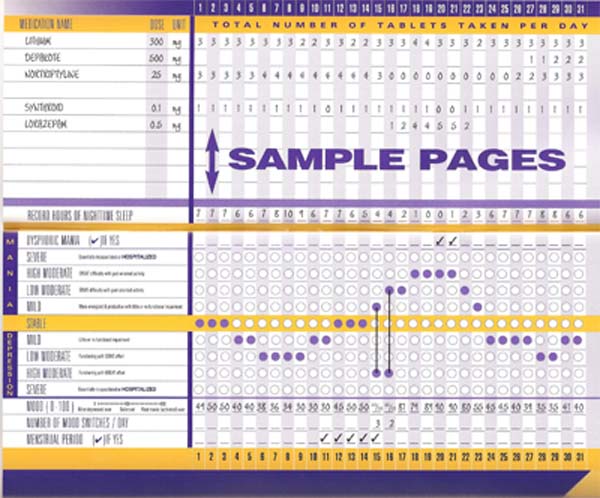Mobile Apps and Other Technologies May Make It Easier to Track Mood Symptoms Longitudinally
Multiple investigative groups at the 9th International Conference on Bipolar Disorder (ICBD) held in Pittsburgh in 2011 reported on the use of mobile phones or other automated processes to provide a more detailed ongoing record of a patient’s mood fluctuations and response to treatment. A particularly notable study by Nolen and colleagues described an electronic version of the life chart method (e-LCM) that would be accessible via internet, and which could be integrated with the patient’s file and used for research. These investigators developed software for a patient version and a clinician version. The web-based version is not yet available for patient use.
Editor’s Note: Until this and other useful electronic monitoring procedures become available, we recommend using the written version of a life chart to provide daily assessments of mood, side effects, and comorbid symptoms in order to provide a detailed numerical and graphic record with which to judge treatment response. This method is extremely valuable in developing new treatment approaches for those with treatment-resistant illness, and if patients keep these records, physicians will have optimal and detailed input in order to assess response and make treatment recommendations.
My Mood Monitor provides another available approach. This system was developed primarily as a screening instrument, but also includes a longitudinal monitoring component. It is not designed for daily monitoring, but can be used repeatedly with a minimal interval of one week between ratings.
We’ve written before about depressioncheck, My Mood Monitor’s iPhone app that can quickly screen for mood and anxiety disorders.
Comments
Leave a Reply


